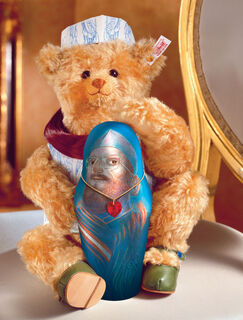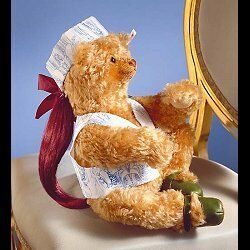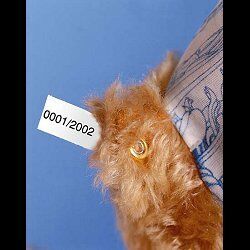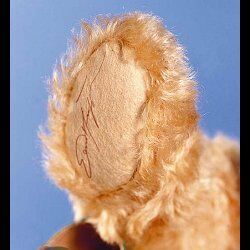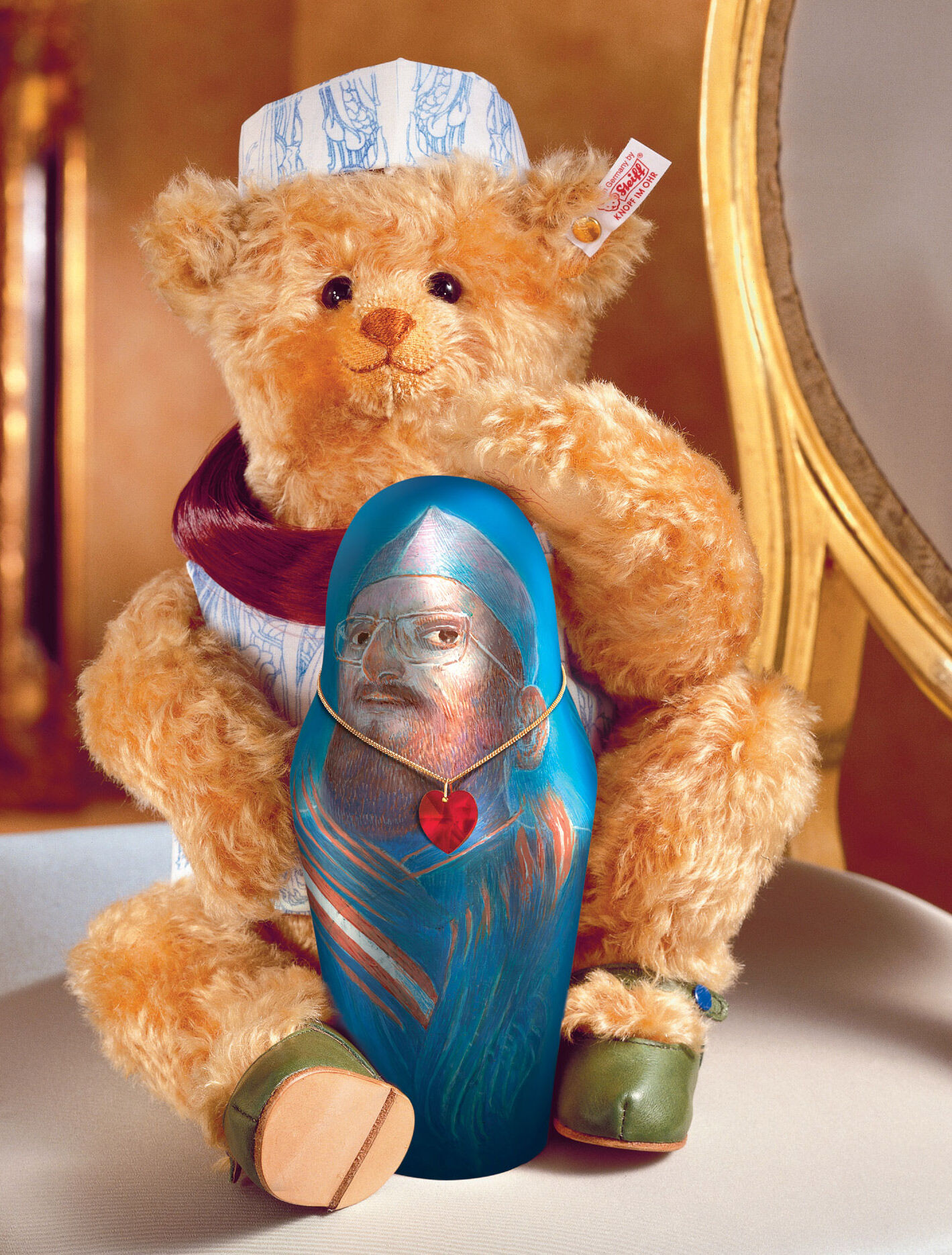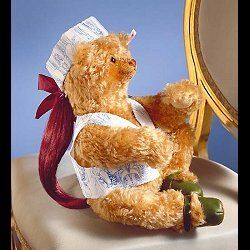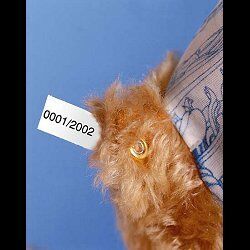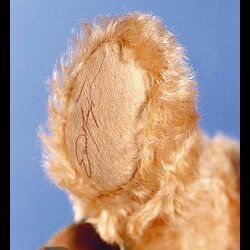Steiff teddy bear "Sweetie"
Steiff teddy bear "Sweetie"
Quick info
limited, 2.002 copies | mohair plush + porcelain | handmade | pendant with crystal | certificate
Detailed description
Steiff teddy bear "Sweetie"
A very personal art object by Prof. Ernst Fuchs as a symbol of love, security and motherly care.
Original artist's multiple, handmade by Steiff®. Limited edition 2,002 copies. Golden mohair plush with Titian-coloured mop of hair and Ernst Fox outfit. The teddy bear holds a 20 cm high porcelain matryoshka in Ernst Fuchs porcelain, designed by the artist. With two signed childhood photos of Ernst Fuchs inside the figure and a red crystal heart pendant. With certificate.
Customer reviews
Sehr gute und korrekte Abwicklung! Bestellung, Lieferung, Bezahlung!Sehr empfehlenswert!
About Ernst Fuchs
1930-2015
Ernst Fuchs, born in Vienna in 1930, already presented his works to the public in 1946/47 together with other young artists during his studies at the Vienna Academy. He was one of the co-founders of the Vienna School of Fantastic Realism.
This art movement emerged in Vienna around 1945 and deliberately set itself apart from abstract art. In their works, the artists dealt with French Surrealism, the experiences of New Objectivity and metaphysical painting as well as the fantastic elements of Viennese pre-war art. Ernst Fuchs' work has had a decisive influence on our understanding of 20th-century art.
The motifs are complex allegories depicting human afflictions between life and death. Biblical and mythological representations dominate. The motifs of the Old and New Testaments are deliberately enigmatic and visionary in expression. These riddles are meant to bring knowledge and solution to the viewer as well as to the artist.
His engagement with the heterogeneous art traditions led him to his historicism. He mixed the styles, sometimes in a polemical way. In his first book, "Architectura Caelestis: Images of the Hidden Prime of Styles" first published in 1964, he set out his artistic conception.
The imaginative pictorial inventions, often alienated by surreal elements, evoke something mystical and often erotic. Fuchs' entire oeuvre is repeatedly permeated by biblical motifs. They all culminate in the unique book, the Ernst Fuchs Bible.
Term for an art object (sculpture, installation), which is produced in multiple copies in a limited and numbered edition according to the artist‘s will.
Artist's multiples have been called the most accessible and affordable art on the market.

